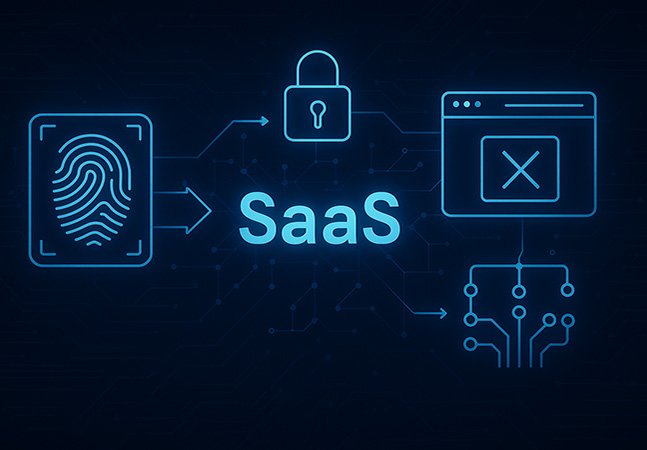The SaaS Cybersecurity Kill Chain
Understanding the Evolution of Cyber Attacks
Most IT professionals are familiar with the concept of the cybersecurity kill chain—the steps an attacker takes to compromise a system. This framework, originally adapted from military strategies, provides a roadmap for understanding the phases of an attack. The traditional stages usually include reconnaissance, initial access, execution, persistence, and data exfiltration. However, as we transition into the Software-as-a-Service (SaaS) era, this kill chain takes on a new form; the identity of users becomes the new perimeter, and attackers are increasingly exploiting cloud app integrations, Single Sign-On (SSO), and OAuth protocols.
The Distinction Between Old and New Attack Strategies
Historically, cybersecurity focused heavily on perimeter defenses, such as firewalls and VPNs. In the 2000s, the primary goal was to strengthen defenses against unauthorized access from the outside. With the arrival of the 2010s, the tide shifted toward endpoint security, as attackers found ways to compromise these devices, often using phishing attacks to gain access to a single device and then pivot throughout the network.
Fast forward to today, and the paradigm has shifted again—this time toward cloud-based services and applications. A focus on identity has emerged, underscoring the idea that "identities are the new perimeter." Attackers no longer aim to breach firewalls; instead, they target user identities to gain access to sensitive data across various SaaS applications.
Phases of the Kill Chain in a SaaS Environment
Despite the changing landscape, the fundamental phases of the kill chain remain relevant but require a nuanced understanding:
1. Reconnaissance
In a traditional setup, attackers might probe network ports to identify vulnerabilities. In a SaaS context, the reconnaissance stage involves investigating the types of services and configurations an organization uses. Techniques like SAML enumeration help expose details about the SSO provider necessary to exploit vulnerabilities. Attackers may also utilize slug tenant enumeration to identify the configurations of SaaS applications, all while remaining outside the network’s defenses.
2. Initial Access
While compromising endpoints was once the main goal for initial access, attackers in a SaaS-first world target cloud identities. Phishing attacks are evolving; rather than simply attaching malicious files to emails, attackers now embed links leading to so-called "Attacker in the Middle" pages. These stolen credentials can provide seamless access, even bypassing Multi-Factor Authentication (MFA) measures.
Attackers may also opt for OAuth consent phishing, where a manipulative permissions screen is presented to the end user. If approved, the attacker gains extensive access rights, effectively undermining the security of the intended workflow.
3. Persistence
Once inside, maintaining access can look starkly different as well. In traditional environments, this could involve setting up a scheduled task or service on the endpoint. In a SaaS world, attackers can create accounts directly in cloud applications, set up OAuth apps, or establish sharing links to sensitive data stored in services like OneDrive or Google Drive. This resiliency means that even after being detected, attackers can continue to operate without much effort.
4. Execution
In the execution phase, the tactics of attackers are transforming. Instead of deploying malware or harmful scripts, the focus shifts toward taking advantage of automation workflows within SaaS platforms or exploiting API vulnerabilities. For instance, registering an unauthorized instance of an OAuth app could provide similar access with less risk of detection due to weak logging.
The Hidden Threats of SaaS Applications
One of the most significant challenges that organizations face in a SaaS environment is the number of hiding places available to attackers. Previously, incident response measures could involve resetting user passwords, wiping endpoints, and removing suspicious applications. However, in a world where cloud identity reigns, attacking can lead to widespread access across multiple applications simultaneously.
With just a brief window of time as a legitimate user, attackers can create redundant persistence methods across cloud platforms, making it increasingly challenging to fully eradicate their presence even after a substantial remediation effort.
Evolving Incident Response Procedures
The shift toward SaaS applications emphasizes the need for a revamped approach to incident response. Organizations must implement nuanced strategies to monitor access and verify the integrity of accounts more effectively. This might involve understanding how SaaS applications work and ensuring that identity management practices are in line with contemporary threats.
Regular audits and monitoring of permissions granted within cloud applications will be necessary to combat the rising tide of identity-based attacks. Additionally, organizations may need to invest in advanced tools that provide visibility into OAuth apps and other integrations to thwart potential compromises before they escalate.
In summary, as the cybersecurity landscape continues to evolve with the accelerated adoption of SaaS applications, it’s crucial to adapt the existing kill chain framework to adequately prepare for emerging attack vectors centered around identity and access management.





